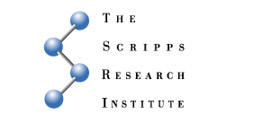 |
|
News and Publications
Structure of Molecular Tracks and Motors
R.A. Milligan, J.M. Al-Bassam, C.M. Birdsell, S.M. Cain, B.O.
Carragher,* A.W.-C. Lin, I. Rouiller, M. Whittaker, E.M.
Wilson-Kubalek, W. Wriggers
* Beckman Institute, Urbana, IL
Our research focuses on elucidating the structure-function
relationships of myosin and kinesin motor proteins. Our goal is to
visualize and describe the conformational changes in the track-motor
complexes that occur during the cycles of interaction. We use electron
cryo-microscopy and image analysis to calculate 20-Å-resolution
3-dimensional maps of the complexes in the presence and absence of
nucleotide analogs. These maps of the entire complexes and the x-ray
structures of the individual components are used to build
high-resolution models of the working assemblies. In this way, we
obtain a detailed picture of how the motors interact with their tracks
at various stages in the chemomechanical cycle.
So far we have built models of the actomyosin rigor complex and
have visualized dramatically different conformations of smooth muscle
myosin II, nonmuscle myosin IIB, brain myosin V, myosin VI, and brush
border myosin I heads bound to actin in the presence of ADP. Most of
this work is being done in collaboration with H.L. Sweeney, University
of Pennsylvania. We found that ADP has little effect on the interaction
geometry of the myosin motor domain with actin. However, the myosin
domain that contains light chains undergoes a dramatic change in
orientation when this nucleotide is present. Our data suggest that the
later stages of the ATPase cycle, which culminate in release of ADP,
contribute to the power stroke in these myosin motors. Most
interestingly, we found that myosin VI has an unusual ADP-induced
movement, suggesting that this myosin moves in the opposite direction
to all other members of the myosin superfamily. Additional experiments
are under way to explore this result.
In collaboration with R. Vale, University of California, San
Francisco, we are using the same general approach to study the
attachment of kinesin motors to microtubules. We showed that brain
kinesin and ncd motor domains bind to microtubule protofilaments with
the same geometry of interaction, despite the opposite direction of
movement of these molecules. This result focused attention on the
neck-linker region of these molecules. Most recently, we completed a
study in which gold cluster labels were attached to the neck-linker of
motor molecules. This gold-labeling approach enabled us to indirectly
visualize the orientation of the neck-linker at 4 well-defined stages
in the ATPase cycle. The findings allow us to propose a mechanochemical
cycle for kinesin motors.
Exciting technical advances in our group include the
development of a general approach for helical crystallization of
macromolecules on tube-forming lipids and the implementation of
automatic grid searching and image acquisition protocols for electron
cryo-microscopy.
PUBLICATIONS
Celia, H., Wilson-Kubalek, E., Milligan, R.A., Teyton, L. Structure
and function of a membrane-bound murine major histocompatibility
complex class I molecule. Proc. Natl. Acad. Sci. U. S. A. 96:5634,
1999.
Dias, D.P., Milligan, R.A. Motor protein decoration of
microtubules grown in high salt reveals the presence of mixed lattices.
J. Mol. Biol. 287:287, 1999.
Nogales, E., Whittaker, M., Milligan, R.A., Downing, K.H. High-resolution model of the microtubule. Cell 96:79, 1999.
Oegema, K., Wiese, C., Martin, O.C., Milligan, R.A., Iwamatsu, A., Mitchison, T.J., Zheng, Y. Characterization of two related Drosophila l-tubulin complexes that differ in their ability to nucleate microtubules. J. Cell Biol. 144:721, 1999.
Viegel, C., Coluccio, L.M., Jontes, J.D., Sparrow, J.C., Milligan, R.A., Molloy, J.E. The motor protein myosin-1 produces its working stroke in two steps. Nature 398:530, 1999.
Wriggers, W., Milligan, R.A., McCammon, J.A. Situs: A
package for docking crystal structures into low-resolution maps from
electron microscopy. J. Struct. Biol. 125:185, 1999.
Wriggers, W., Milligan, R.A., Schulten, K., McCammon, J.A. Self-organizing neural networks bridge the biomolecular resolution gap. J. Mol. Biol. 284:1247, 1998.
|
|



